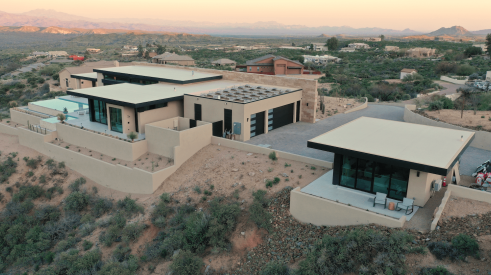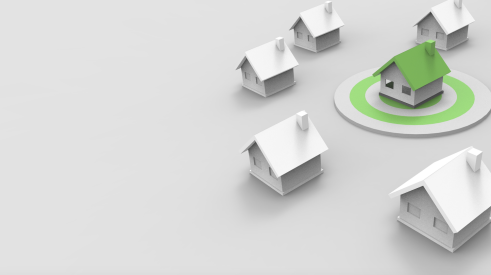While energy-efficient and resource-efficient technologies are great, you're not saving much money or energy if you put them in a poorly designed home.
Last month's column outlined green building practices that cost the builder less. In this issue, we'll highlight practices that result in a more affordable home for your buyer.
 |
A greener home should be more affordable
A common attitude in the housing industry is that building a green home costs more, but five of PATH's green building tenets — reducing energy use; lowering water use; using fewer materials; improving durability; and properly siting the home — often improve the home's affordability.
"Today we tend to define 'affordable' in relation to the purchase price of a home, without considering the ongoing expenses of the home and the life cycle of the building itself," says David Jones, president of Revival Homes of New Hartford, Conn. "To determine what is truly affordable, we should look at operating expenses, life cycle costs and purchase price."
"I don't believe 'green' can be achieved by just adding green products to the house at the end of the design process," says Jones. "There is nothing wrong with using the products, but the house must be designed so that all the components work together and function as a system."
Translation: green building isn't only about adding technologies, but also properly integrating them into the home. It means the home is maximally efficient because all the parts work together.
Your material choices also affect the price tag. For example, finding local recycled materials for flooring or countertops can be much more cost effective than ordering them through a manufacturer. Minimizing construction waste and recycling the rest saves on hauling costs and landfill tipping fees.
But nothing can have a greater impact on affordability than the home's size and orientation. When designing a home, the builder and the home buyer need to understand that extra square footage comes at a real cost in materials and monthly utility bills. Proper orientation of the house can also reduce heating and cooling costs by taking advantage of the sun's energy and shade from trees.
So, you can build a reasonably priced home using basic green building principles. Can you do it with advanced technologies, too?
Julius Poston, president of StalwartBuilt Homes, a modular home builder in Panama City, Fla., says yes. Every house he builds is certified green by LEED. StalwartBuilt accomplishes this with efficient building practices and by knowing which green products work best in different situations.
Poston maintains that using the correct combination of technologies and materials from the right suppliers can yield an affordable green home in most markets.
"Even our LEED platinum home, which is a net-zero energy home, sold for less than $230,000, including the lot," Poston says. "The goal for Stalwart is to offer LEED Platinum homes below the locally accepted price for workforce developments."
To do this, StalwartBuilt carefully reviews every product that goes into the home and analyzes its impact on sustainability, health, energy and environmental performance.
But before adding products, Poston considers their impact on cost. If it's expensive, he looks for alternative products or processes.
When your choices do increase the purchase price, the burden falls on you to demonstrate the savings to the consumer. Hard numbers make a convincing case. Revival Homes feature life cycle cost comparisons on its Web site. According to its analysis of mortgage payments and utility costs, an Energy Star-qualified home might cost more up front, but the total monthly costs are $30 less than a traditional home of the same size in his market.
| Author Information |
| Scott T. Shepherd writes about better building practices on behalf of the Partnership for Advancing Technology in Housing (PATH). PATH is administered by the U.S. Department of Housing and Urban Development. Learn more at www.pathnet.org. |
Advertisement
Related Stories
Codes + Standards
Public Comment Period Opens for National Green Building Standard Updates
The 45-day public comment period for draft 2 of the 2024 NGBS begins on April 12, 2024
Design
The Desert Comfort Idea Home: a True Desert Oasis
A challenging environment, ambitious building-performance goals, and modern aesthetics come together in a stunning, net zero custom home in Arizona's Sonoran Desert
Sustainability
Top 10 States for NGBS Green Certification in 2022
To date, these are the top 10 U.S. states for green building certification






